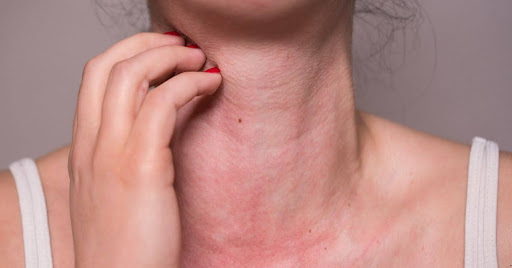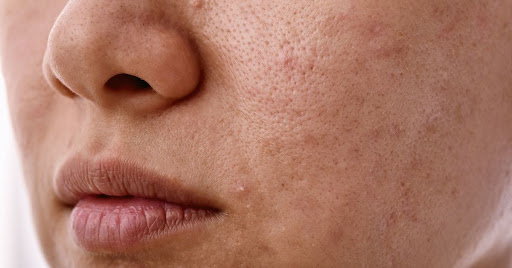How to Treat Sun Allergy at Home: Remedies for Instant Relief
3 min read
By DocGenie , Published on - 05 March 2025 Sun allergy, medically known as photosensitivity, is a skin reaction triggered by exposure to sunlight. It’s especially common during the summer months and can cause discomfort, visible rashes, and in severe cases, blisters or swelling. Understanding what sun allergy is, its symptoms, and how to manage it effectively at home can help reduce its impact on your daily life.
Sun allergy, medically known as photosensitivity, is a skin reaction triggered by exposure to sunlight. It’s especially common during the summer months and can cause discomfort, visible rashes, and in severe cases, blisters or swelling. Understanding what sun allergy is, its symptoms, and how to manage it effectively at home can help reduce its impact on your daily life.This guide outlines natural remedies, preventive strategies, and when to seek medical help for treating sun allergy at home.
What is Sun Allergy?
 Sun allergy is not a single condition but a term used to describe several disorders where skin exposed to sunlight develops a reaction. The most common types include:
Sun allergy is not a single condition but a term used to describe several disorders where skin exposed to sunlight develops a reaction. The most common types include:- Polymorphic Light Eruption (PMLE)
- Actinic Prurigo
- Solar Urticaria
- Photoallergic Reaction
The exact cause varies but is typically linked to the immune system overreacting to UV rays.
Common Sun Allergy Symptoms
Recognizing the early signs can help you take timely steps for sun allergy treatment at home.Symptoms include:
- Red, itchy skin
- Raised rashes or tiny bumps
- Swelling or tenderness in the affected area
- Burning or stinging sensation
- In some cases, blisters or peeling
These symptoms typically appear within minutes to a few hours after sun exposure.
How to Treat Sun Allergy at Home
 Here are effective and easy home remedies for instant sun allergy relief:
Here are effective and easy home remedies for instant sun allergy relief:- Cold Compress for Immediate Relief Applying a cold compress can help soothe burning and reduce inflammation. It also helps relieve itching caused by a sun allergy rash.
- Wrap ice cubes in a clean cloth
- Apply to affected areas for 10–15 minutes
- Repeat as needed, especially after sun exposure
- Aloe Vera: Natural Soother Aloe vera gel is known for its cooling and anti-inflammatory properties. It not only hydrates but also heals the skin.
- Use fresh aloe vera gel (straight from the leaf) or 100% pure gel
- Apply twice a day to the affected area
- Coconut Oil: Gentle Moisturizer for Sensitive Skin Virgin coconut oil has antimicrobial and soothing properties. It provides a protective barrier over irritated skin and helps in healing.
- Oatmeal Bath for Itchy Rashes Colloidal oatmeal (finely ground oats) is highly effective in reducing itch and calming inflammation.
- Add one cup of oatmeal powder to lukewarm bath water
- Soak for 15–20 minutes
- Pat the skin dry gently
- Cucumber or Potato Slices to Calm Irritation These kitchen ingredients have cooling and anti-inflammatory properties.
- Refrigerate thin slices of cucumber or raw potato
- Place over affected skin for 10–15 minutes
- Repeat 2–3 times daily
- Apple Cider Vinegar for Mild Rashes Apple cider vinegar has antiseptic and anti-inflammatory effects. It helps balance the skin’s pH and reduces irritation.
- Mix 1 part apple cider vinegar with 2 parts water
- Apply using a cotton pad and rinse after 10 minutes
- Hydration and Anti-Inflammatory Diet Staying hydrated and eating the right foods can accelerate recovery from sun allergy.
- Coconut water, buttermilk
- Fruits like watermelon, cucumber, papaya
- Anti-inflammatory foods like turmeric, ginger, and green leafy vegetables
How to use:
Application tip:
Use it after a cold compress to lock in moisture and reduce itching.
Steps:
How to use:
Caution: dilute before applying.
How to use:
Include in your diet:
Sun Allergy Treatment at Home: Do’s and Don’ts
Do:
- Stay indoors during peak sun hours (10 a.m. – 4 p.m.)
- Wear broad-spectrum sunscreen with SPF 30 or higher
- Cover skin with full-sleeved clothing and hats
- Use mild, fragrance-free moisturizers
Don’t:
- Scratch the rash as it may lead to infection
- Use harsh soaps or chemical products on the affected skin
- Expose skin to hot showers or direct fan blasts
When to Seek Medical Help
While home remedies offer relief, medical attention is necessary if:- The rash spreads or worsens
- You experience fever or chills
- Blisters become painful or ooze pus
- Symptoms persist beyond 3–5 days despite home treatment
Consult a dermatologist for prescription-strength creams or allergy medication in such cases.
Conclusion
Sun allergy can be uncomfortable but is manageable with the right approach. By identifying early symptoms and using proven sun allergy treatment home remedies, you can find quick relief and prevent future flare-ups. Combine these tips with preventive care like using sunscreen and wearing protective clothing to enjoy the sun without compromising your skin’s health.If the symptoms are persistent or worsen, don’t hesitate to consult a healthcare provider for specialized treatment.



